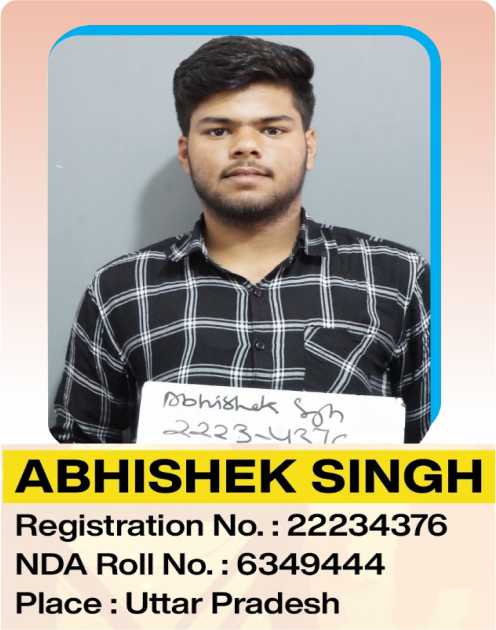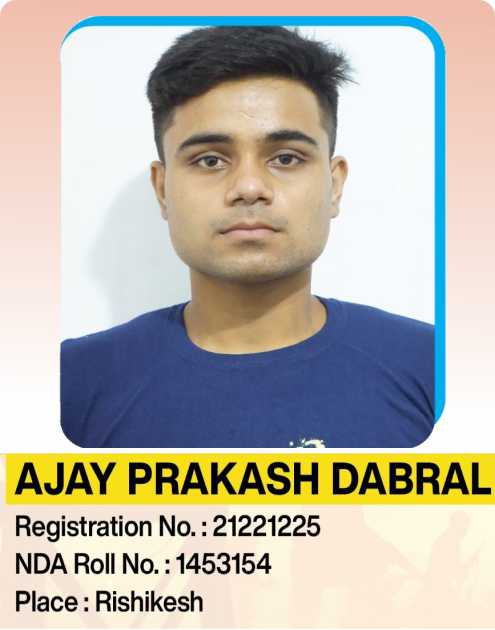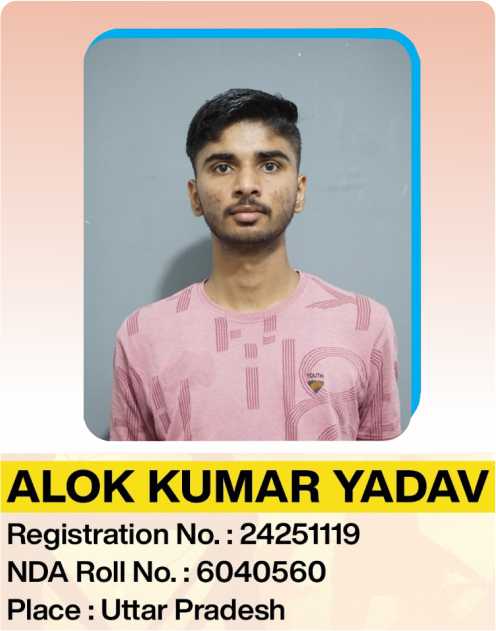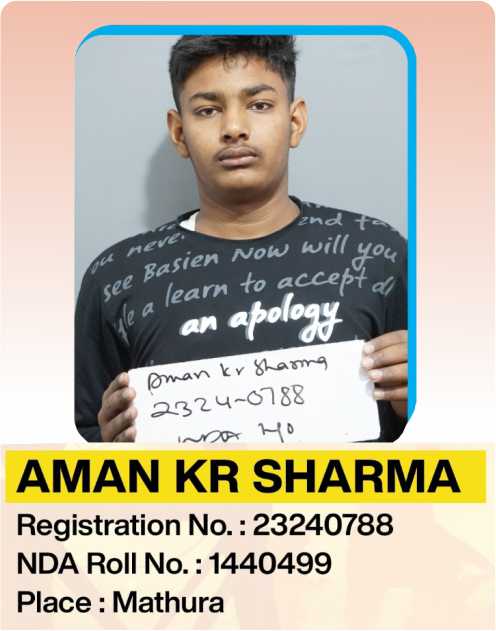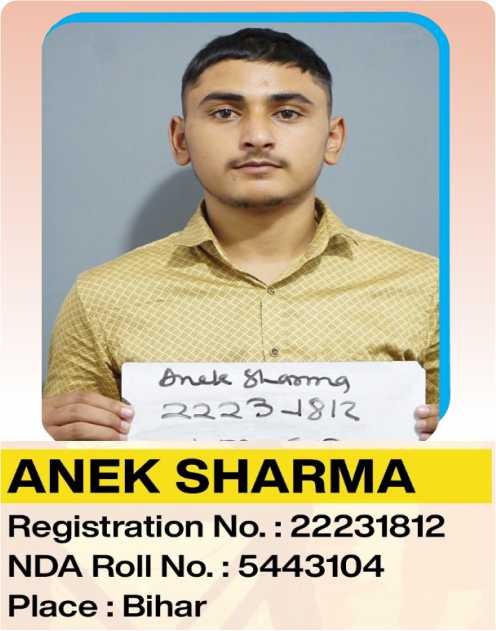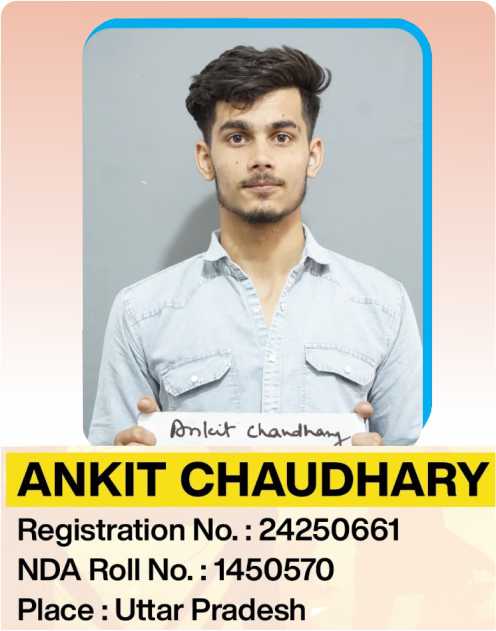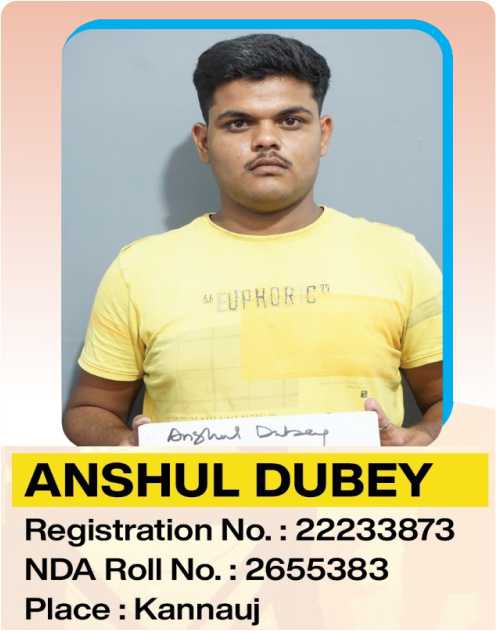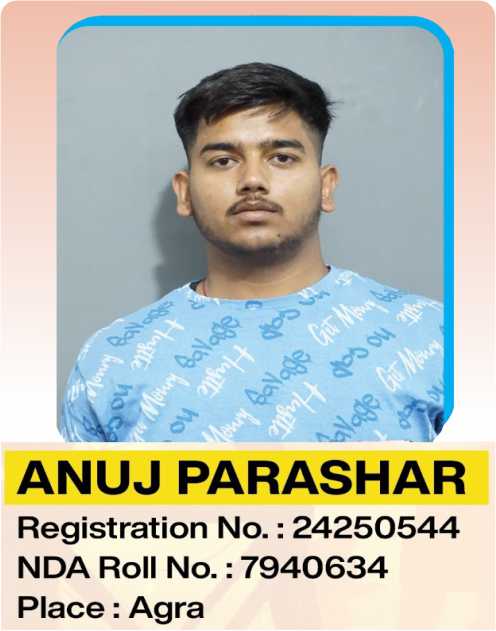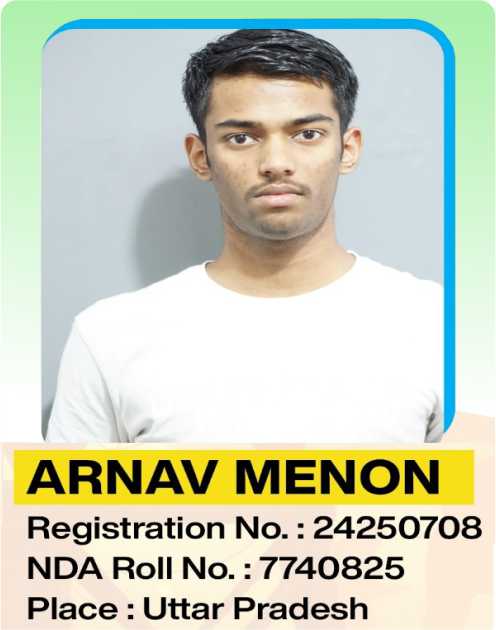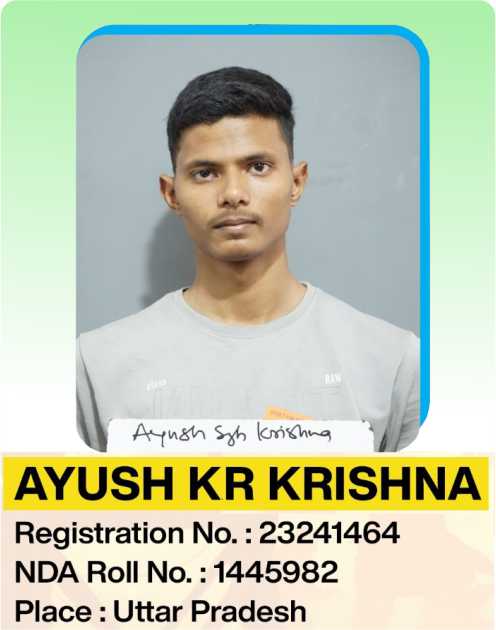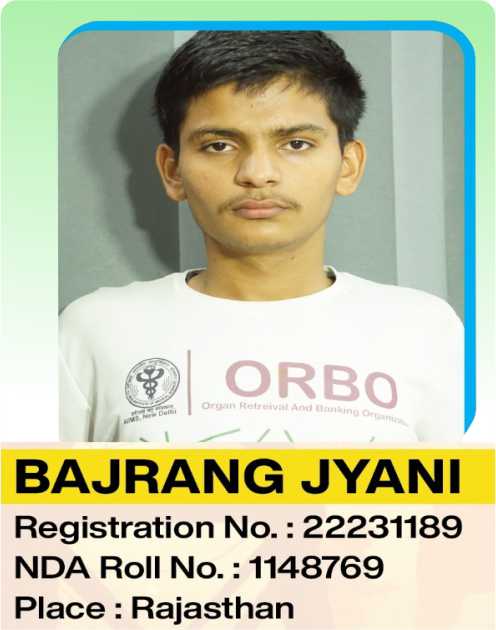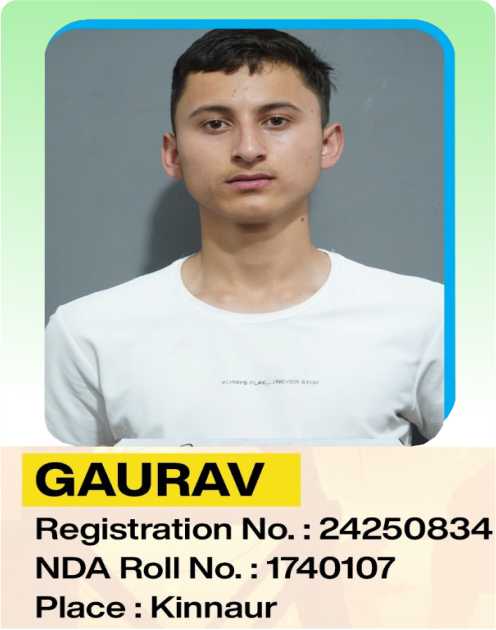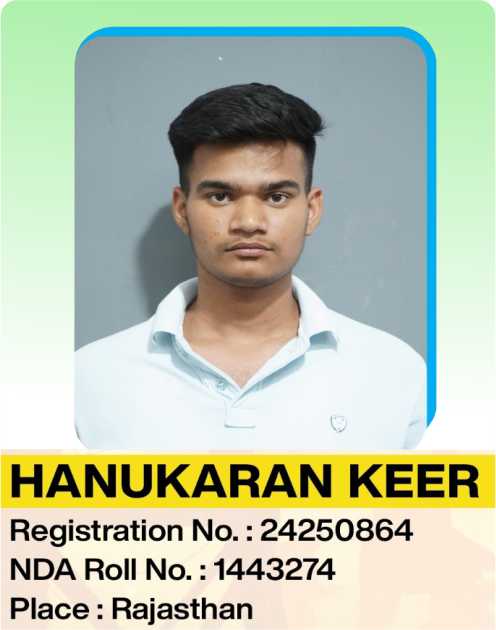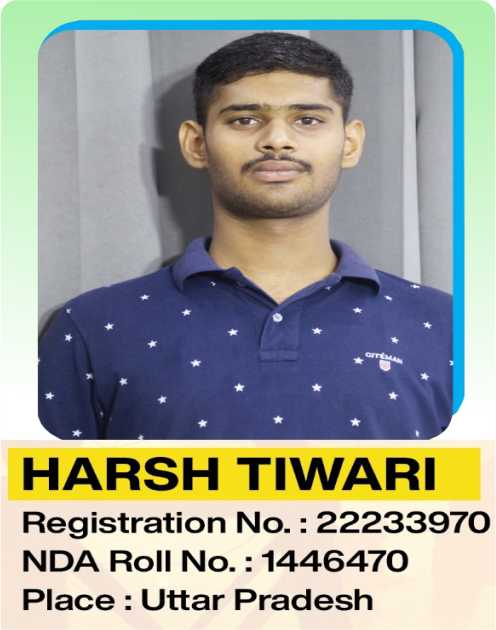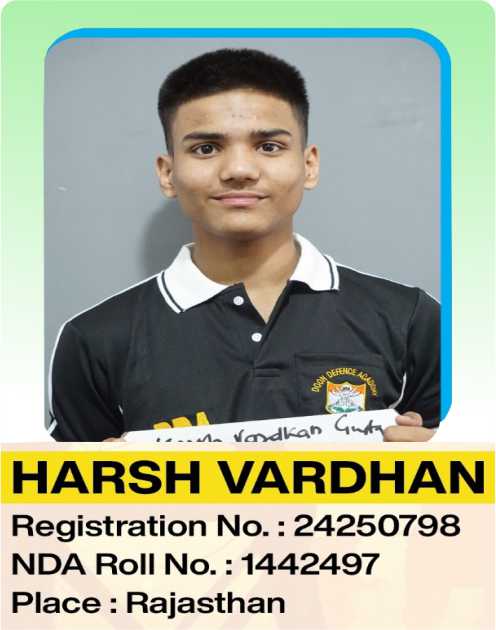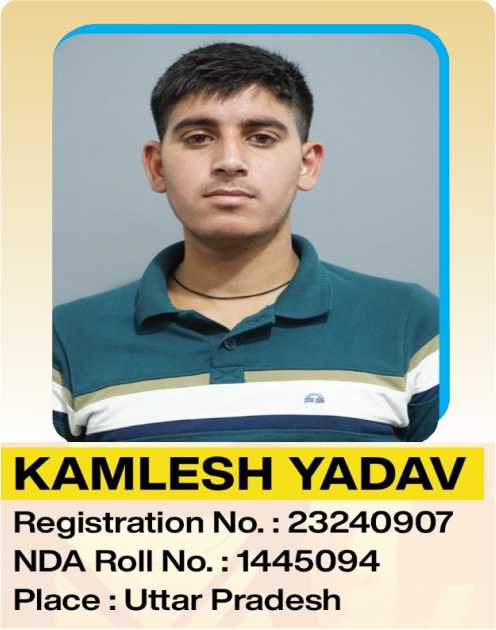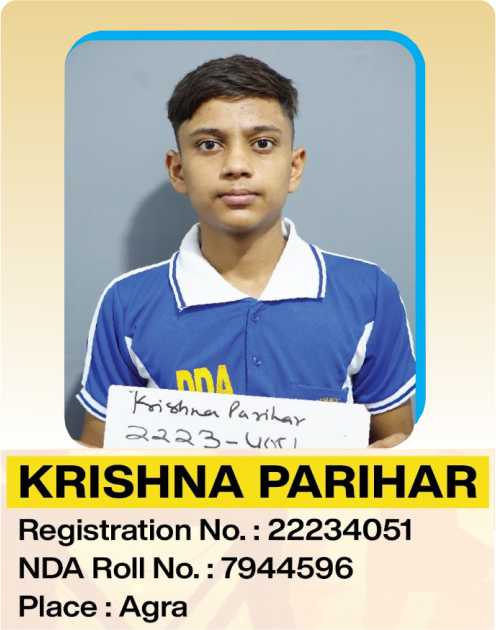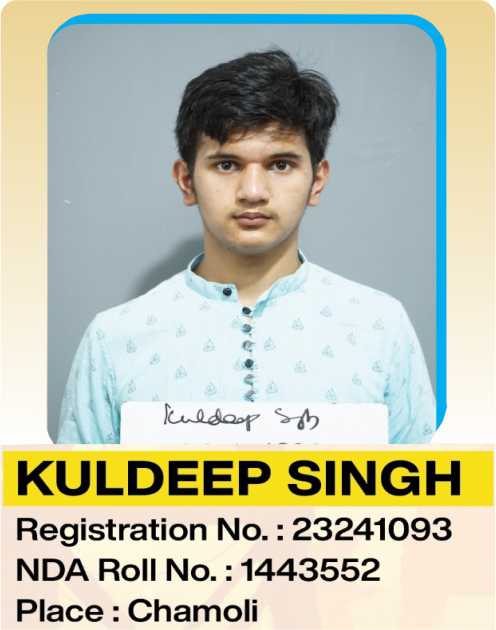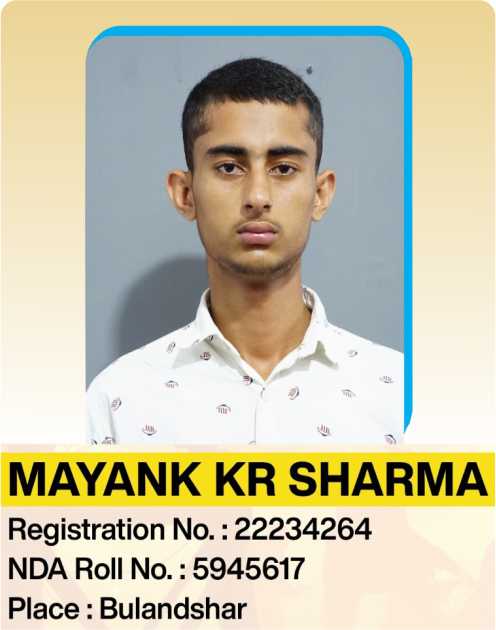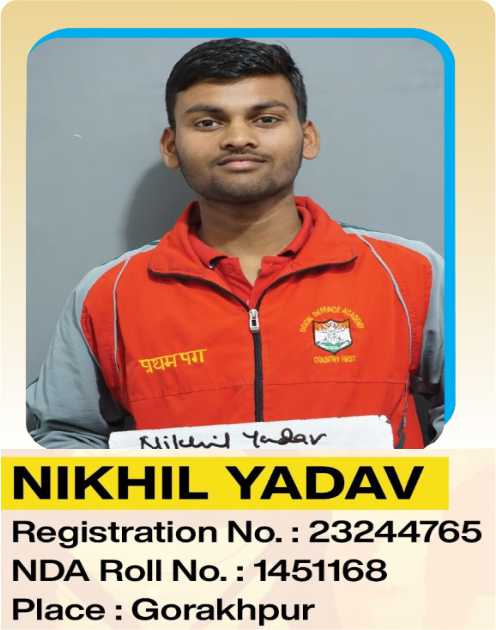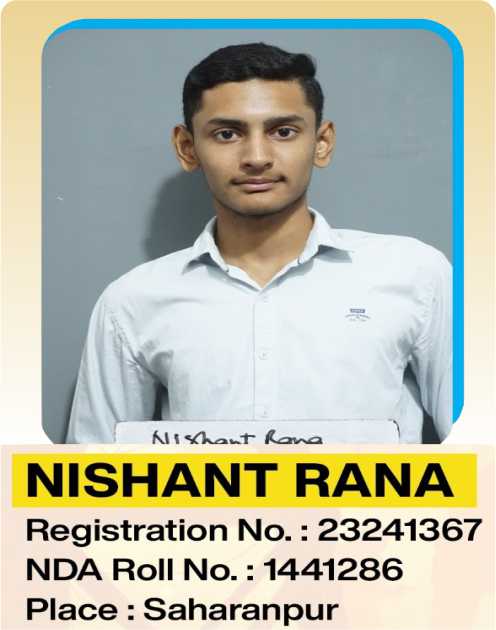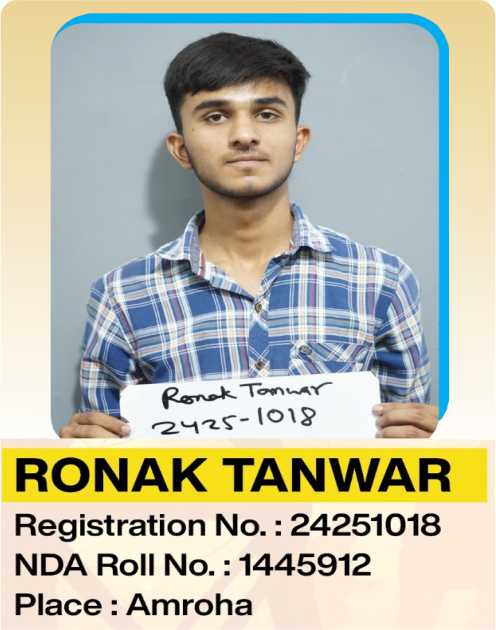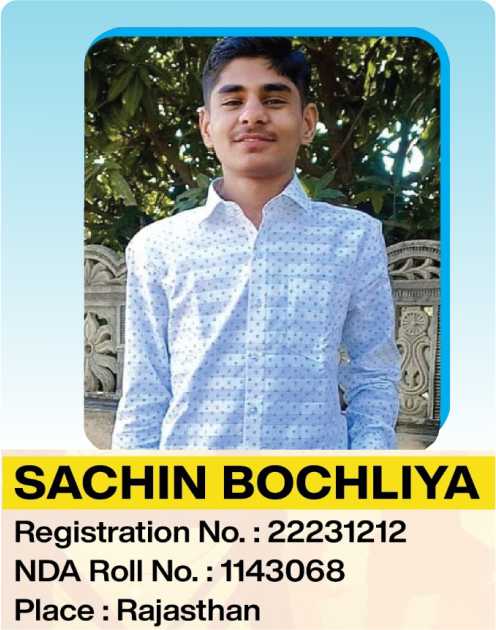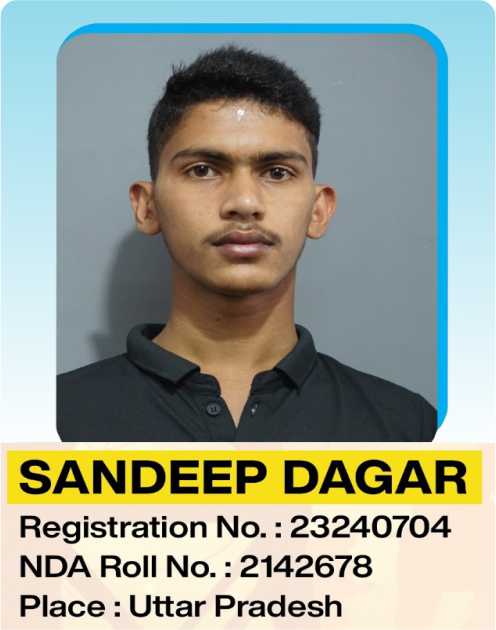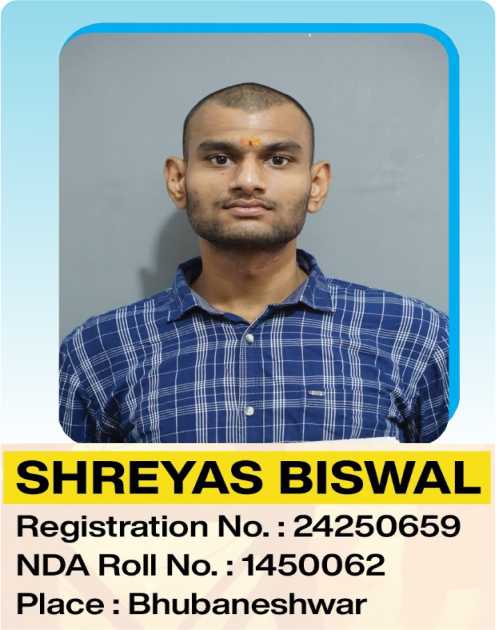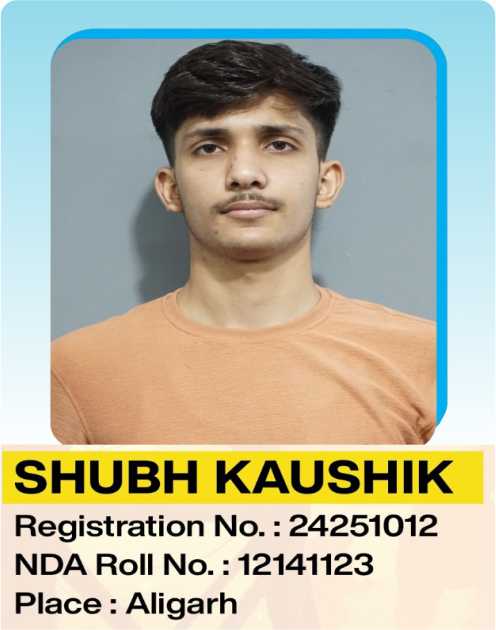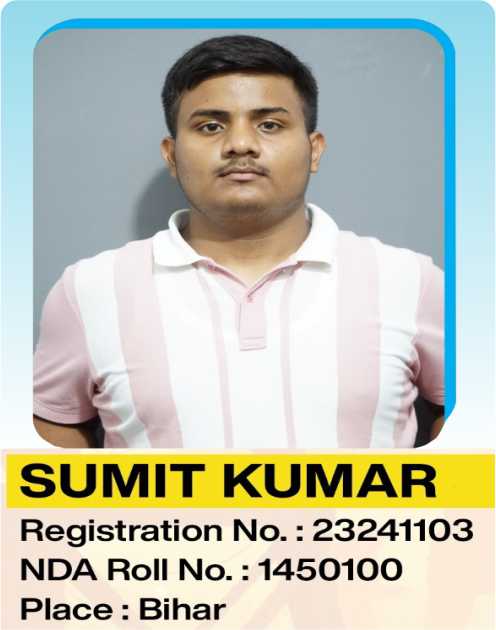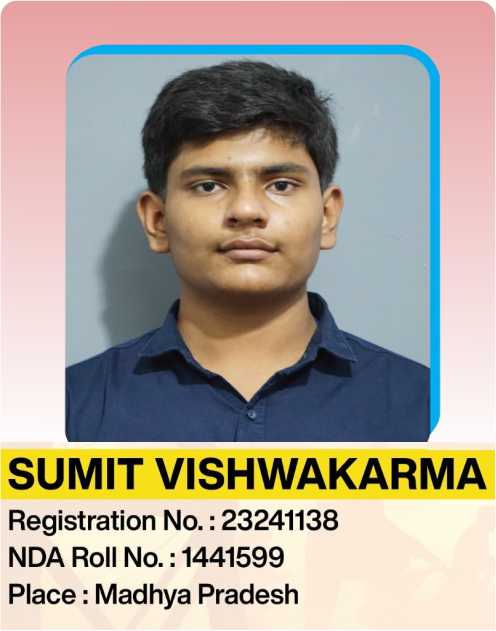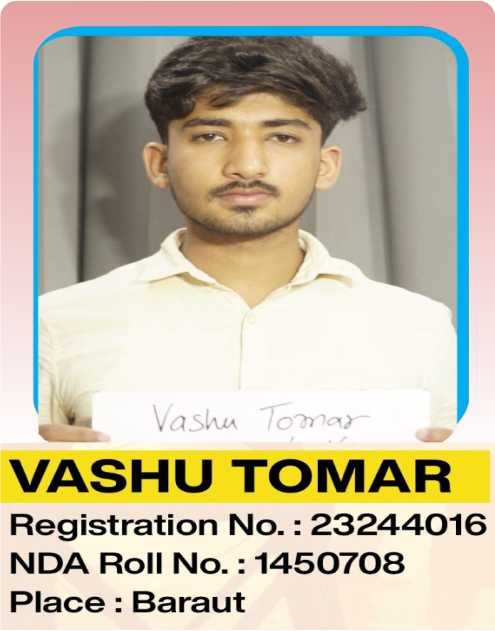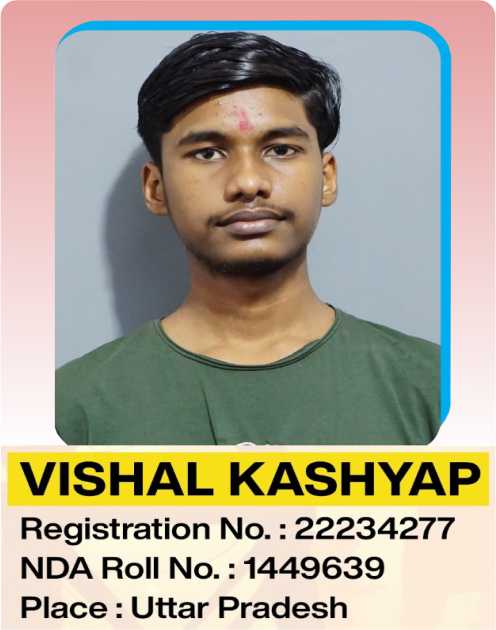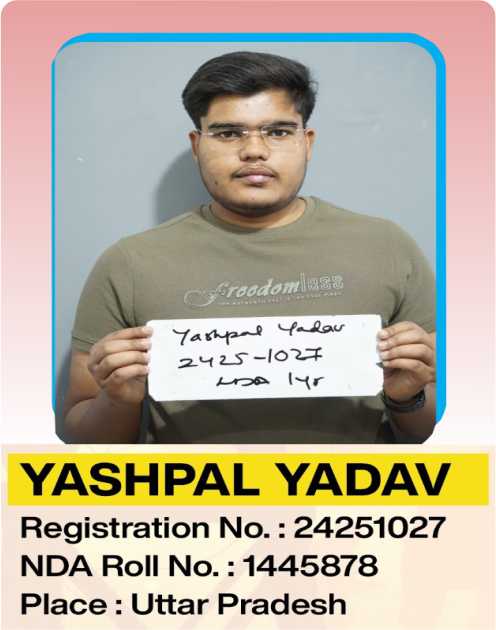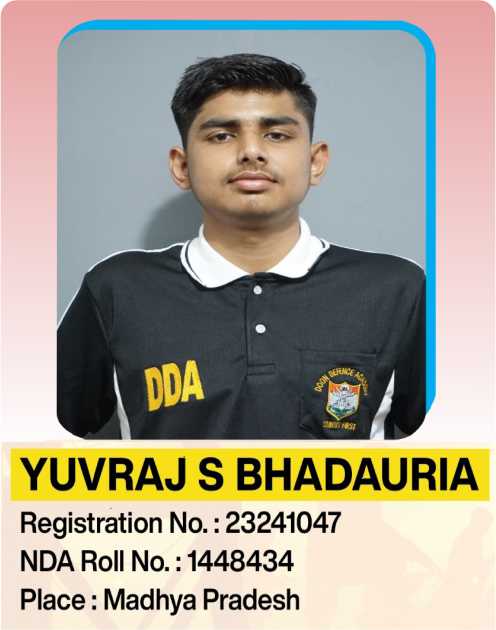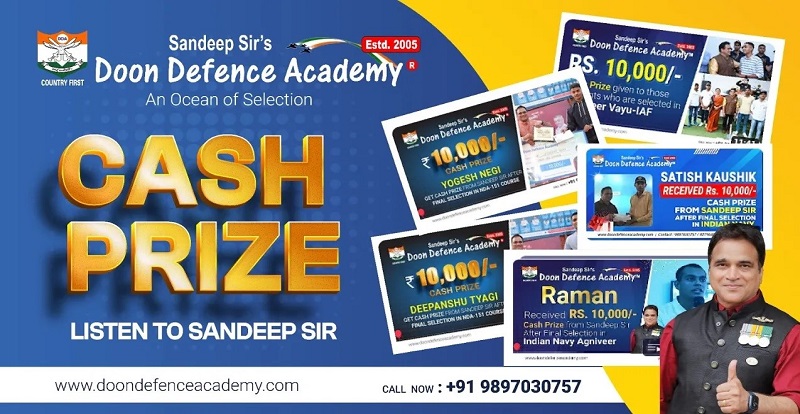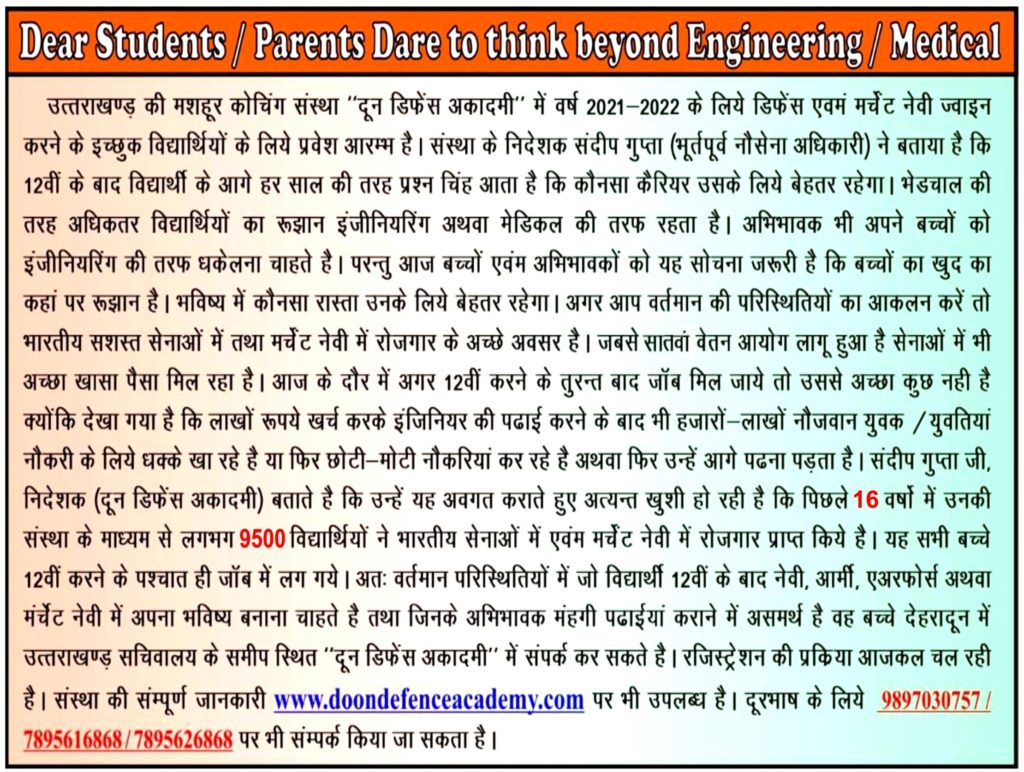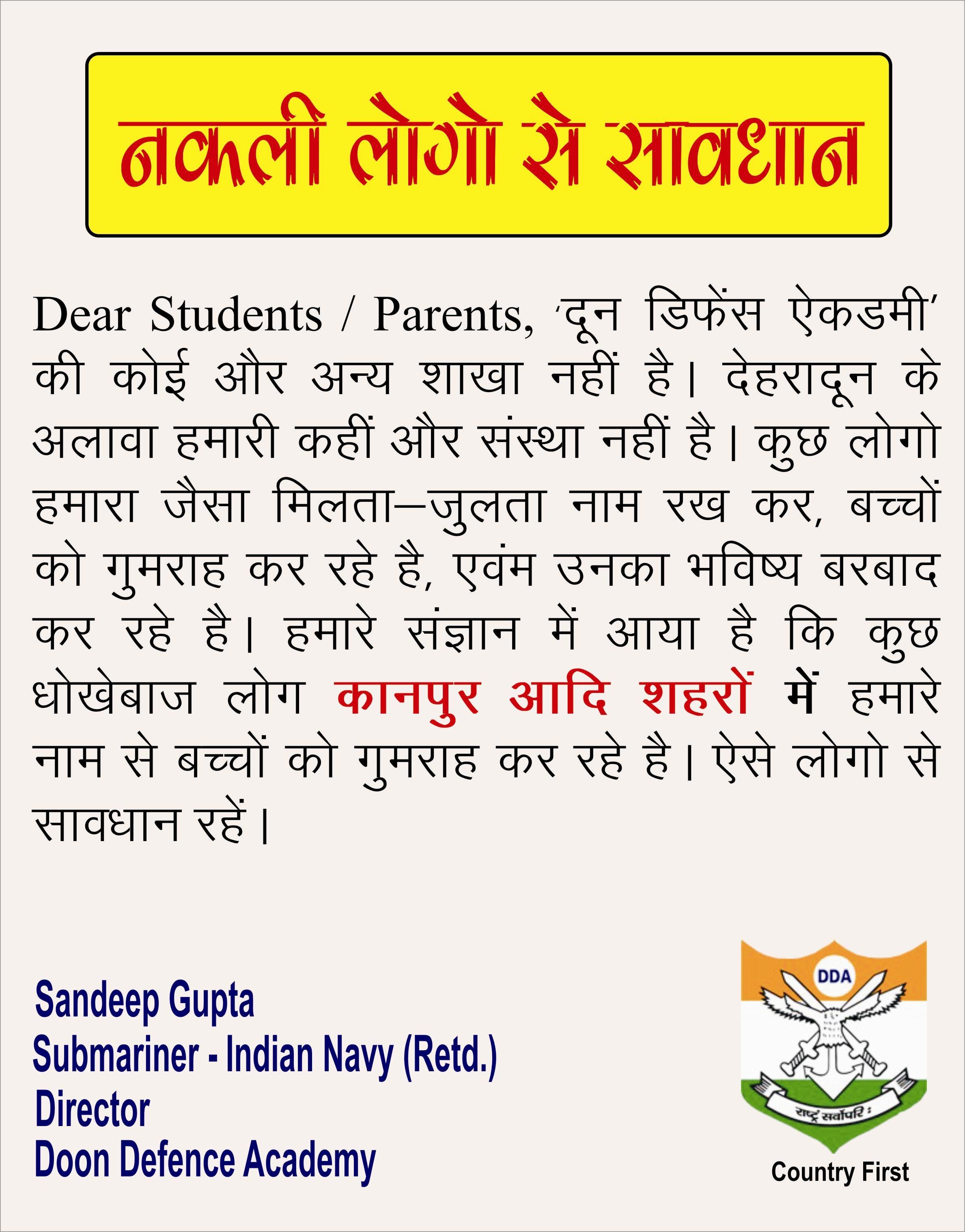
|
ANSWER KEY OF NDA – II, 2024 |
|
| Download Booklet A (Answer Key) | CLICK HERE |
| Download Booklet B (Answer Key) | CLICK HERE |
| Download Booklet C (Answer Key) | CLICK HERE |
| Download Booklet D (Answer Key) | CLICK HERE |
|
APPLY NDA & CDSE – I, 2025 COACHING | CLICK HERE | |
|
|
BATCH STARTING : 30 Sept, 07 Oct, 14 Oct & 21 Oct 2024 |
|
REGULAR COURSES
NDA & CDSE-I,2025
AFCAT,SSB-INTERVIEW
AGNIVEER (ARMY, NAVY, AIRFORCE)
MERCHANT NAVY
FOR QUALIFYING NDA 2, 2024 WRITTEN EXAM
NDA II, 2024 Notification: Union Public Service Commission release the NDA II, Exam Notification 2024 on 15th May 2024. Candidates who are interested in NDA II Exam 2024 must bookmark the dates and those who are interested in upcoming NDA Exams must go through the below article for detailed information about UPSC NDA Exam. The online registration process for NDA II exam 2024 has been scheduled from 15th May 2024 to 04th June 2024 and the written exam is to be held on 01 Sept 2024.
NDA Exam is conducted twice every year for selecting eligible candidates for the admission to Army, Navy, and Air Force wings of NDA and Indian Naval Academy Courses (INAC) of the NDA for the 154th Course and for the 116th Indian Naval Academy Course (INAC) commencing from 2nd July, 2025. The selection of eligible males & females will be done through written Examination and SSB interviews.

NDA II, Exam 2024 Exam Summary
To have an overview of the UPSC NDA II,2024 Exam, the candidates must refer to the below summary table including all important details for the exam. Now eligible girls can also apply for National Defence Academy & Naval Academy Examination.
| UPSC | NDA II, EXAM 2024 |
|---|---|
| Exam Name | National Defence Academy & Naval Academy Examination (II), 2024 |
| Organisation | Union Public Service Commission |
| Exam Level | National |
Total Vacancies (404) |
NDA (National Defence Academy) :
(1) Army – 208 (including 10 for female candidates) (2) Navy – 42 (including 06 for female candidates) (3) Airforce – (ii) Ground Duties (Tech) – 18 (including 02 for female candidates) (iii) Ground Duties (Non Tech) – 10 (including 02 for female candidates) |
| Naval Academy (10+2 Cadet Entry Scheme) :
34 (including 05 for female candidates) |
|
| Online Registration | May 15, 2024 to June 04, 2024 |
| Age Limit | January 02, 2006 to January 01, 2009 |
| Exam Date | September 01, 2024 (Sunday) |
| Frequency of Exam | Twice a Year |
| Exam Mode | Offline |
| Exam Duration | Five hours (Mathematics: 2 ½ hours, General Ability Test (GAT): 2 ½ hours) |
| Exam Pattern |
|
| Language of Exam |
English & Hindi |
|
NATIONAL DEFENCE ACADEMY & NAVAL ACADEMY EXAMINATION (II), 2024 |
|
| Download Full Notification NDA- II, 2024 EXAM | CLICK HERE |
| Apply Online NDA- II, 2024 (Last Date : 04 JUNE 2024) | CLICK HERE |
|
APPLY NDA COACHING | CLICK HERE | |
|
UPSC NDA II, 2024 Eligibility Criteria
The candidates must hold the minimum qualification to be eligible for Defence Jobs. Below we have mentioned the details for Education Qualification, Age Limit, Nationality, and Physical Standards.
NDA Education Qualification
(i) For Army Wing of National Defence Academy:—12th Class pass of the 10+2 pattern of School Education or equivalent examination conducted by a State Education Board or a University.
(ii) For Air Force and Naval Wings of National Defence Academy and for the 10+2 Cadet Entry Scheme at the Indian Naval Academy :—12th Class pass with Physics, Chemistry and Mathematics of the 10+2 pattern of School Education or equivalent conducted by a State Education Board or a University.
Candidates who are appearing in the 12th Class under the 10+2 pattern of School Education or equivalent examination can also apply for this examination.
Such candidates who qualify for the SSB interview but could not produce Matriculation/10+2 or equivalent certificate in original at the time of SSB interview should forward duly self attested Photocopies to ‘The Directorate General of Recruiting, Army HQ, West Block.III, R.K. Puram, New Delhi-110066’ and for Naval Academy candidates to ‘Naval Headquarters, DMPR, OI&R Section, Room No. 204, ‘C’ Wing, Sena Bhavan, New Delhi-110011’ by 24th June, 2025 failing which their candidature will be cancelled. All other candidates who have produced their Matriculation and 10+2 pass or equivalent certificates in original at the time of attending the SSB interview and have got the same verified by the SSB authorities are not required to submit the same to Army HQ or Naval HQ as the case may be. Certificates in original issued by the Principals of the Institutions are also acceptable in cases where Boards/Universities have not yet issued certificates. Certified true copies/photostate copies of such certificates will not be accepted.
In exceptional cases, the Commission may treat a candidate, who does not possess any of the qualifications prescribed in this rule as educationally qualified provided that he possesses qualifications, the standard of which in the opinion of the Commission, justifies his admission to the examination.
NOTE 1 : Candidates appearing in the 11th class exam are not eligible for this examination.
NOTE 2 : Those candidates who have yet to qualify in the 12th class or equivalent examination and are allowed to appear in the UPSC Examination should note that this is only a special concession given to them. They are required to submit proof of passing the 12th class or equivalent examination by the prescribed date (i.e. 24th June, 2025) and no request for extending this date will be entertained on the grounds of late conduct of Board/University Examination, delay in declaration of results or any other ground whatsoever.
NOTE 3 : Candidates who are debarred by the Ministry of Defence from holding any type of Commission in the Defence Services shall not be eligible for admission to the examination and if admitted, their candidature will be cancelled.
NOTE 4 : Those candidates, who have failed CPSS/PABT earlier, are now eligible for Air Force in Ground Duty branches if they fill their willingness in the Online Application Form available at the Commission’s website.
NDA Age Limit
For UPSC NDA II Exam 2024, candidates must have been born not earlier than 02nd Jan, 2006, and not later than 01st Jan, 2009.
Nationality
Nationality: A candidate must be unmarried male/female and must be :
(i) a citizen of India, or
(ii) a subject of Nepal, or
(iii) a person of Indian origin who has migrated from Pakistan, Burma, Sri Lanka, and East African Countries of Kenya, Uganda, the United Republic of Tanzania, Zambia, Malawi, Zaire and Ethiopia or Vietnam with the intention of permanently settling in India.
Provided that a candidate belonging to categories (ii) and (iii), above shall be a person in whose favour a certificate of eligibility has been issued by the Government of India.
A certificate of eligibility will not, however, be necessary in the case of candidates who are Gorkha subjects of Nepal.
Physical Standards
Candidates must be physically fit according to physical standards for admission to National Defence Academy and Naval Academy Examination (II), 2023 as per guidelines given in Appendix IV.
NDA II Exam 2024 Application Fee
Candidates (excepting SC/ST candidates/female candidates / Wards of JCOs/NCOs/ORs specified in Note 2 below who are exempted from payment of fee) are required to pay a fee of Rs. 100/- (Rupees one hundred only) either by remitting the money in any Branch of State Bank of India by cash, or by using Visa/Master/RuPay Credit/Debit Card/UPI Payment or by using internet banking of any Bank.
The fee can be deposited in any Branch of SBI by cash or can be submitted by using the net banking facility of the State Bank of India or directly by using Visa/ MasterCard/ Rupay Credit/ Debit Card.
Candidates belonging to SC/ ST candidates/ Sons of JCOs/ NCOs/ ORs are exempted from payment of the fee.
NOTE I : Applicants who opt for “Pay by Cash” mode, should print the system generated Pay-in-slip during Part-II registration and deposit the fee at the counter of SBI Branch on the next working day only. “Pay by Cash” mode option will be deactivated at 23:59 hours of 03.06.2024 i.e. one day before the closing date; however, applicants who have generated their Pay-in-slip before it
is de-activated may pay at the counter of SBI Branch during banking hours on the closing date. Such applicants who are unable to pay by cash on the closing date i.e. during banking hours at SBI Branch, for reason whatsoever, even if holding a
valid Pay-in-Slip, will have no other offline option but to opt for online Debit/ Credit Card/UPI Payment or Internet Banking
Payment mode on the closing date i.e. till 6:00 P.M. of 04.06.2024.
Documents Required to Fill NDA II Exam 2024 Application Form
- Before filling out the UPSC NDA II application form, the candidates must keep the following documents aside.
- Scanned images of photograph and signature
- Photo-identity card in PDF format (Aadhar Card / Voter Card/PAN Card/ Passport/ Driving License/ School Photo ID or any other photo ID Card issued by the State / Central Government)
- Bank details to make an online transaction
- Marksheet and admit card of Class 10 and 12
Steps to Fill NDA Form 2024 for NDA II Exam
Visit the official website of www.upsc.gov.in and click on “Apply Online”. The candidates have to complete their application form in two stages: Part I & Part II which have been detailed below:
NDA Application Form Part I
The Part I registration to fill NDA II form 2024 is classified into 4 steps:
Step-I The candidate must begin with the registration process and submit all the details correctly in the application form.
Step II The next step is to choose the preferred branch you want to join in the Defence Army.
Step III Enter your email id and phone number and verify the details.
Step-IV The last step to complete the registration process is the generation of the Registration ID.
NDA Application Form Part II
Step-I Pay the application fee for UPSC NDA II Exam as applicable.
Step-II Select the preferred city where you want your exam centre to be allotted.
Step-III Upload your photograph, signature, and photo-identity proof. The file should not exceed 300 kb and must be less than 20 kb.
Step-IV Agree to the declaration and submit your application form for UPSC NDA II Exam. Download a copy of the application form for future reference.
NDA Written Exam Pattern
The candidates who are preparing for NDA II Exam 2024, must be familiar with the exam pattern that is followed by UPSC. We have discussed the details for NDA 2024 exam pattern below:
1. The exam will be conducted in an offline mode
2. The questions will be in Multiple Choice Questions
3. The questions will be asked in bilingual languages (English & Hindi)
Mathematics : There are 120 questions in the written exam in the maths paper. For every correct answer, 2.5 marks will be awarded. The total score for this section is 300 and the evaluation includes negative marking. The negative marking for each of the incorrect answers is ⅓ of 2.5 – that is 0.83.
General Ability Test : The GAT paper will consist of 150 questions. Each of these questions carries 4 marks, and thus the total marks for this section is 600 and the evaluation includes negative marking also. The negative marking for each of the incorrect answers is ⅓ of 4 – that is- 1.33. This is where the NDA exam pattern 2022 differs a bit from the other exams.
Have a look at the detailed exam pattern for NDA II Examination :
| Code | Subject | Max. Marks | Duration |
| 1 | Mathematics | 300 | 2.5 hours |
| 2 | General Ability Test | 600 | 2.5 hours |
| Total | 900 | 5 hours | |
SYLLABUS OF THE EXAMINATION
PAPER-I
MATHEMATICS
(Code No. 01)
(Maximum Marks-300)
1. ALGEBRA: Concept of set, operations on sets, Venn diagrams. De Morgan laws, Cartesian product, relation, equivalence relation. Representation of real numbers on a line. Complex numbers—basic properties, modulus, argument, cube roots of unity. Binary system of numbers. Conversion of a number in decimal system to binary system and vice-versa. Arithmetic, Geometric and Harmonic progressions. Quadratic equations with real coefficients. Solution of linear inequations of two variables by graphs. Permutation and Combination. Binomial theorem and its applications. Logarithms and their applications.
2. MATRICES AND DETERMINANTS: Types of matrices, operations on matrices. Determinant of a matrix, basic properties of determinants. Adjoint and inverse of a square matrix, Applications-Solution of a system of linear equations in two or three unknowns by Cramer’s rule and by Matrix Method.
3. TRIGONOMETRY: Angles and their measures in degrees and in radians. Trigonometrical ratios. Trigonometric identities Sum and difference formulae. Multiple and Sub-multiple angles. Inverse trigonometric functions. Applications-Height and distance, properties of triangles.
4. ANALYTICAL GEOMETRY OF TWO AND THREE DIMENSIONS: Rectangular Cartesian Coordinate system. Distance formula. Equation of a line in various forms. The angle between two lines. Distance of a point from a line. Equation of a circle in standard and a general form. Standard forms of parabola, ellipse, and hyperbola. Eccentricity and axis of a conic. Point in a three-dimensional space, the distance between two points. Direction Cosines and direction ratios. Equation two points. Direction Cosines and direction ratios. Equation of a plane and a line in various forms. The angle between two lines and the angle between two planes. Equation of a sphere.
5. DIFFERENTIAL CALCULUS: Concept of a real-valued function–domain, range, and graph of a function. Composite functions, one-to-one, onto, and inverse functions. The notion of limit, Standard limits—examples. Continuity of functions—examples, algebraic operations on continuous functions. Derivative of function at a point, geometrical and physical interpretation of a derivative—applications. Derivatives of sum, product, and quotient of functions, a derivative of a function with respect to another function, a derivative of a composite function. Second-order derivatives. Increasing and decreasing functions. Application of derivatives in problems of maxima and minima.
6. INTEGRAL CALCULUS AND DIFFERENTIAL EQUATIONS: Integration as inverse of differentiation, integration by substitution and by parts, standard integrals involving algebraic expressions, trigonometric, exponential, and hyperbolic functions. Evaluation of definite integrals—determination of areas of plane regions bounded by curves—applications. Definition of order and degree of a differential equation, formation of a differential equation by examples. General and particular solutions of differential equations, solutions of the first order, and first-degree differential equations of various types—examples. Application in problems of growth and decay.
7. VECTOR ALGEBRA: Vectors in two and three dimensions, magnitude, and direction of a vector. Unit and null vectors, the addition of vectors, scalar multiplication of a vector, scalar product, or dot product of two vectors. Vector product or cross product of two vectors. Applications—work done by a force and moment of a force and in geometrical problems.
8. STATISTICS AND PROBABILITY: Classification of data, Frequency distribution, cumulative frequency distribution—examples. Graphical representation—Histogram, Pie Chart, frequency polygon— examples. Measures of Central tendency—Mean, median, and mode. Variance and standard deviation—determination and comparison. Correlation and regression.
Probability: Random experiment, outcomes, and associated sample space, events, mutually exclusive and exhaustive events, impossible and certain events. Union and Intersection of Events. Complementary, elementary, and composite events. Definition of probability—classical and statistical—examples. Elementary theorems on probability—simple problems. Conditional probability, Bayes’ theorem—simple problems. Random variable as function on a sample space. Binomial distribution, examples of random experiments giving rise to Binominal distribution.
Note: You should get Guidance from
PAPER – II
GENERAL ABILITY TEST
(Code No. 02)
(Maximum Marks-600)
Part ‘A’—ENGLISH (Maximum Marks—200)
The question paper in English will be designed to test the candidate’s understanding of English and workman-like use of words. The syllabus covers various aspects like Grammar and usage, vocabulary, comprehension, and cohesion in extended text to test the candidate’s proficiency in English.
Part ‘B’—GENERAL KNOWLEDGE (Maximum Marks—400)
The question paper on General Knowledge will broadly cover the subjects: Physics, Chemistry, General Science, Social Studies, Geography, and Current Events. – The syllabus given below is designed to indicate the scope of these subjects included in this paper. The topics mentioned are not to be regarded as exhaustive and questions on topics of similar nature not specifically mentioned in the syllabus may also be asked. Candidates’ answers are expected to show their knowledge and intelligent understanding of the subject.
Section ‘A’ (Physics)
Physical Properties and States of Matter, Mass, Weight, Volume, Density and Specific Gravity, Principle of Archimedes, Pressure Barometer. The motion of objects, Velocity, and Acceleration, Newton’s Laws of Motion, Force and Momentum, Parallelogram of Forces, Stability and Equilibrium of bodies, Gravitation, elementary ideas of work, Power, and Energy. Effects of Heat, Measurement of Temperature and Heat, change of State and Latent Heat, Modes of Transference of Heat. Sound waves and their properties, Simple musical instruments. Rectilinear propagation of Light, Reflection, and refraction. Spherical Mirrors and Lenses, Human Eye. Natural and Artificial Magnets, Properties of a Magnet, Earth as a Magnet. Static and Current Electricity, conductors and Nonconductors, Ohm’s Law, Simple Electrical Circuits, Heating, Lighting and Magnetic effects of Current, Measurement of Electrical Power, Primary and Secondary Cells, and Use of X-Rays. General Principles in the working of the following: Simple Pendulum, Simple Pulleys, Siphon, Levers, Balloon, Pumps, Hydrometer, Pressure Cooker, Thermos Flask, Gramophone, Telegraphs, Telephone, Periscope, Telescope, Microscope, Mariner’s Compass; Lightening Conductors, Safety Fuses.
Section ‘B’ (Chemistry)
Physical and Chemical changes. Elements, Mixtures and Compounds, Symbols, Formulae and simple Chemical Equations, Law of Chemical Combination (excluding problems). Properties of Air and Water.
Preparation and Properties of Hydrogen, Oxygen, Nitrogen, and Carbon dioxide, Oxidation and Reduction. Acids, bases, and salts. Carbon—different forms. Fertilizers—Natural and Artificial. The material used in the preparation of substances like Soap, Glass, Ink, Paper, Cement, Paints, Safety Matches, and Gun Powder. Elementary ideas about the structure of Atoms, Atomic Equivalent and Molecular Weights, and Valency.
Section ‘C’ (General Science)
Difference between living and non-living. Basis of Life—Cells, Protoplasms, and Tissues. Growth and Reproduction in Plants and Animals. Elementary knowledge of the Human Body and its important organs. Common Epidemics, their causes, and prevention. Food—Source of Energy for man. Constituents of food, Balanced Diet. The Solar System—Meteors and Comets, Eclipses. Achievements of Eminent Scientists.
Section ‘D’ (History, Freedom Movement, etc.)
A broad survey of Indian History, with emphasis on Culture and Civilisation. Freedom Movement in India. Elementary study of Indian Constitution and Administration. Elementary knowledge of Five Year Plans of India. Panchayati Raj, Co-operatives and Community Development. Bhoodan, Sarvodaya, National Integration and Welfare State, Basic Teachings of Mahatma Gandhi. Forces shaping the modern world; Renaissance, Exploration, and Discovery; War of American Independence. French Revolution, Industrial Revolution, and Russian Revolution. Impact of Science and Technology on Society. Concept of one World, United Nations, Panchsheel, Democracy, Socialism, and Communism. Role of India in the present world.
Section ‘E’ (Geography)
The Earth, its shape and size. Lattitudes and Longitudes, Concept of time. International Date Line. Movements of Earth and their effects. Origin of Earth. Rocks and their classification; Weathering—Mechanical and Chemical, Earthquakes and Volcanoes. Ocean Currents and Tides Atmosphere and its composition; Temperature and Atmospheric Pressure, Planetary Winds, Cyclones and Anti-cyclones; Humidity; Condensation and Precipitation; Types of Climate, Major Natural Regions of the World. Regional Geography of India—Climate, Natural vegetation. Mineral and Power resources; location and distribution of agricultural and Industrial activities. Important Sea ports and main sea, land, and air routes of India. Main items of Imports and Exports of India.
Section ‘F’ (Current Events)
Knowledge of Important events that have happened in India in recent years. Current important world events. Prominent personalities—both Indian and International including those connected with cultural activities and sports.
NOTE: Out of the maximum marks assigned to part ‘B’ of this paper, questions on Sections ‘A’, ‘B’, ‘C’, ‘D’, ‘E’ and ‘F’ will carry approximately 25%, 15%, 10%, 20%, 20%, and 10% weightage respectively.
Intelligence and Personality Test
The SSB procedure consists of two stages of Selection processes – stage I and stage II. Only those candidates who clear stage I are permitted to appear for stage II. The details are :
(a) Stage I comprises Officer Intelligence Rating (OIR) tests are Picture Perception * Description Test (PP&DT). The candidates will be shortlisted based on a combination of performance in the OIR Test and PP&DT.
(b) Stage II Comprises Interviews, Group Testing Officer Tasks, Psychology Tests, and the Conference. These tests are conducted over 4 days. The details of these tests are given on the website joinindianarmy.nic.in.
The personality of a candidate is assessed by three different assessors viz. The Interviewing Officer (IO), Group Testing Officer (GTO), and the Psychologist. There is no separate weightage for each test. The marks are allotted by assessors only after taking into consideration the performance of the candidate holistically in all the tests. In addition, marks for the Conference are also allotted on the basis of the initial performance of the Candidate in the three techniques and the decision of the Board. All these have equal weightage.
The various tests of IO, GTO, and Psych are designed to bring out the presence/absence of Officer Like Qualities and their trainability in a candidate. Accordingly, candidates are Recommended or Not Recommended at the SSB.
| Sets | NDA Answer Key PDFs |
|---|---|
| Set A | Download Here |
| Set B | Download Here |
| Set C | Download Here |
| Set D | Download Here |
OUR LATEST SELECTION IN DEFENCE & MERCHANT NAVY
Infrastructure of Sandeep Sir’s Doon Defence Academy
Be Aware of Duplicate Institutes |Doon Defence Academy |


